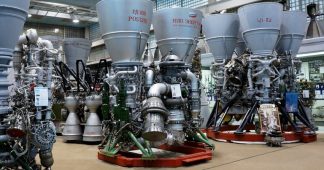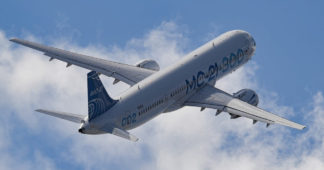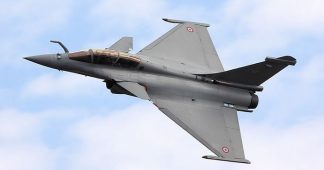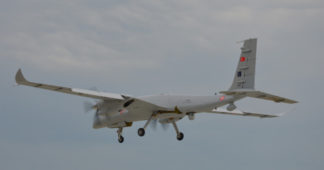Stephen Singer, Hartford Courant
The chief financial officers of Raytheon Technologies Corp. and Lockheed Martin Corp. on Wednesday defended the F-35 fighter jet and its engine following another critical government report that said it too often fails to meet targets for mission capable rates.
An analyst asked Raytheon CFO Neil Mitchill at an industry conference about a “second source potential” that would require Pratt & Whitney, a business unit of Raytheon, to compete for Pentagon contracts 11 years after it won a battle in Congress and became the sole supplier of the engine.
“We’re very happy with the F-135 engine performance right now,” he said. “It’s an incredibly safe engine for a single-engine aircraft.”
The plane is being upgraded, but has never had an engine upgrade, Mitchill said. The most cost-effective solution would be an upgrade to increase power, range and thrust. The network of facilities to repair and maintain the engine “is already in place,” he said.
Jay Malave, chief financial officer at Lockheed Martin, said in a separate appearance at the conference that the defense giant is “pretty bullish” on the plane. The F-35 already competes for international business and is judged on “performance, acquisition price, maintenance cost, operating cost,” he said.
In testimony to Congress April 28, an official of the U.S. Government Accountability Office said the F-35 “continues to not meet its targets for mission capable rates, a measure of the readiness of an aircraft fleet, or its reliability and maintainability metrics.”
“A leading driver of the F-35 not being mission capable has been engine issues,” said Diana Maurer, director of the GAO’s Defense Capabilities and Management.
The F-35 has limited spare engines, leading to more than 9% of F-35 aircraft being inoperable in February. In contrast, the F-16 and other jet fighters have have a certain number of spare engines to meet their wartime needs and “almost always have an operable engine,” she said.
The criticism is not new. U.S. Rep. Adam Smith, chairman of the House Armed Services Committee, last year called the F-35 a “rathole” and suggested the U.S. consider cutting its losses by investing in competing fighter jets. A single F-35 costs as much as $80 million.
The F-35 is the Department of Defense’s most ambitious and costly weapon system in history, with costs estimated at more than $1.7 trillion over its 66-year life cycle, according to the GAO.
Congress sided with East Hartford, Connecticut-based Pratt & Whitney in 2011, ending General Electric Co.’s chances of also building engines for the F-35. It’s become a lucrative franchise for Pratt & Whitney, which posted revenue last year of $18.2 billion. Discontent has been mounting over the engine’s cost and problems with sustainment — maintaining and sustaining the engine over its lifespan. As a result, GE has again been mentioned in a possible rematch with Pratt & Whitney to compete for Pentagon contracts.
©2022 Hartford Courant. Visit at courant.com. Distributed by Tribune Content Agency, LLC.
We remind our readers that publication of articles on our site does not mean that we agree with what is written. Our policy is to publish anything which we consider of interest, so as to assist our readers in forming their opinions. Sometimes we even publish articles with which we totally disagree, since we believe it is important for our readers to be informed on as wide a spectrum of views as possible.











